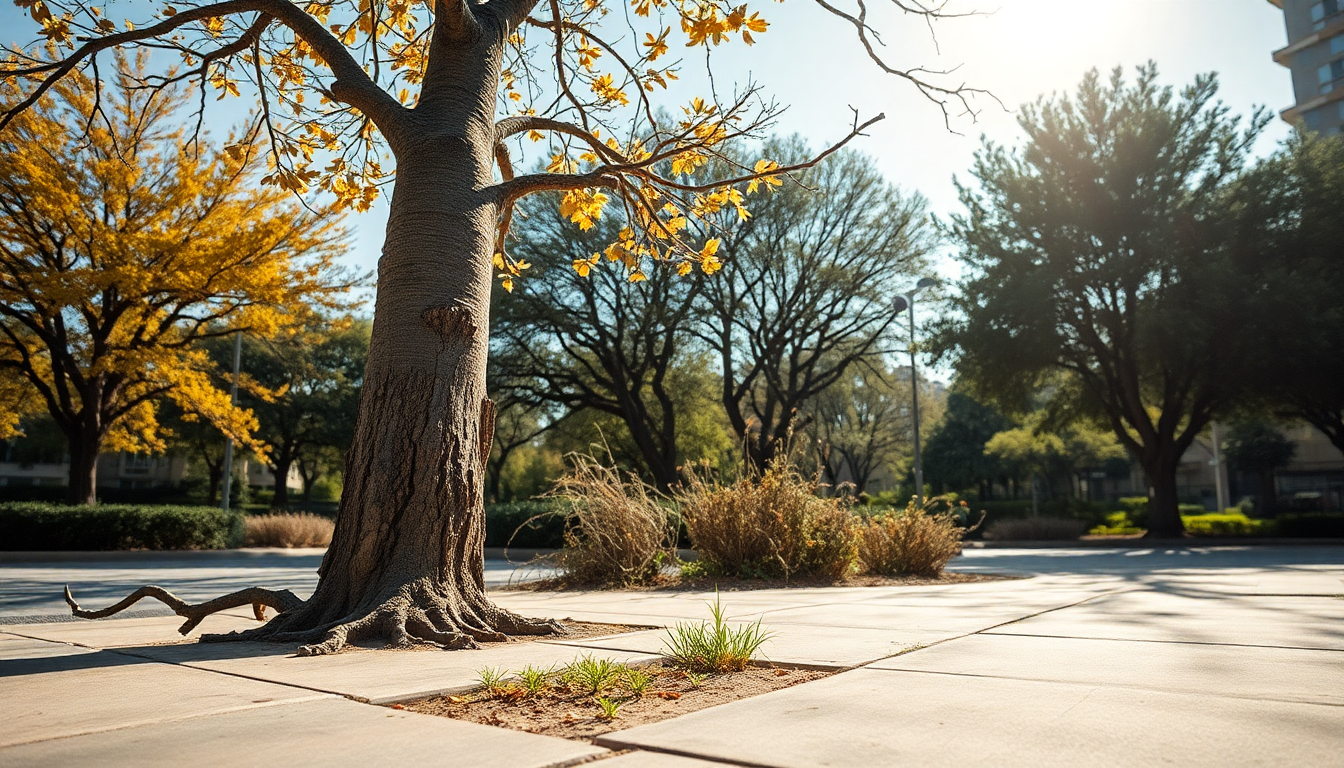Table of Contents
In recent years, the impact of prolonged drought on tree health has emerged as a significant concern, particularly in urban areas. With climate change driving more frequent and severe droughts, it’s crucial to understand how these conditions affect our trees—not just for their sake, but for our safety and the environment’s well-being.
Have you ever noticed trees shedding branches seemingly out of nowhere, without even a strong breeze? This alarming phenomenon has caught the attention of scientists and communities alike. Let’s dive into what’s going on, the implications for our urban spaces, and how we can keep ourselves safe.
The Effects of Drought on Tree Structure
Drought doesn’t just affect the soil—it significantly alters the physiological state of trees, making them more prone to structural failures. Tree physiologists warn that repeated drought conditions can weaken trees over time, leading to sudden branch breakage.
This can happen even on calm days when no external stressors are evident. For instance, experts have documented cases where trees, already compromised by years of drought, have unexpectedly shed large branches, posing serious risks to pedestrians and property.
Research shows that when trees lack water, their ability to maintain structural integrity diminishes.
As drought conditions set in, internal water reserves dwindle, resulting in decreased turgor pressure, which is essential for keeping branches firm. Even trees that appear healthy may drop branches without warning. This issue is especially troubling in urban settings, where the close proximity of trees to human activity raises the stakes for accidents.
Moreover, the cumulative effects of drought weaken a tree’s overall health, diminishing its ability to photosynthesize and store energy. This deterioration makes trees more vulnerable to pests and diseases, creating a vicious cycle of decline. Urban trees face additional stressors like soil compaction and limited root growth, which only worsen the effects of drought.
Have you ever thought about how a tree’s health impacts your daily life?
Identifying At-Risk Trees
Spotting signs of stress in trees is key to maintaining safety in our cities. Symptoms of drought-stressed trees include leaf drop, discolored foliage, and visible decay—like splitting bark or fungal growth. These signs indicate that a tree may be struggling to survive in its environment and could pose a risk to those nearby.
In urban areas, trees often face harsher conditions than their rural counterparts. Factors like compacted soil, limited water availability, and increased sunlight exposure all contribute to their decline. As summer temperatures rise, the stress on these trees escalates, leading to a heightened risk of branch failure. Residents are encouraged to keep an eye on trees in their neighborhoods and report any signs of distress to local authorities or arborists. Are you aware of the trees in your area and how they’re holding up?
Experts advise exercising caution when passing under trees that show signs of stress, especially those known to be less drought-tolerant, like maples and western red cedars. Staying aware of tree health in urban landscapes can help mitigate the risks associated with falling branches.
Future Considerations for Tree Management
As climate change continues to shape our weather patterns, urban forestry management must evolve to tackle these challenges. Strategies to maintain tree health during drought include selecting more drought-resistant species and implementing proper irrigation techniques during dry spells. Local governments and organizations should prioritize regular assessments of urban trees to identify those at risk and take preventive measures.
Moreover, educating the public about the importance of tree care and recognizing signs of stress can empower communities to take an active role in tree management. Encouraging residents to connect with local arborists and participate in tree care initiatives can foster a deeper understanding of the intricate balance between urban environments and tree health. Isn’t it fascinating how much impact we can have on our surroundings?
Ultimately, as urban areas confront the challenges posed by climate change, taking proactive measures and staying mindful of tree health will be essential for ensuring safety and nurturing a thriving urban ecosystem.





